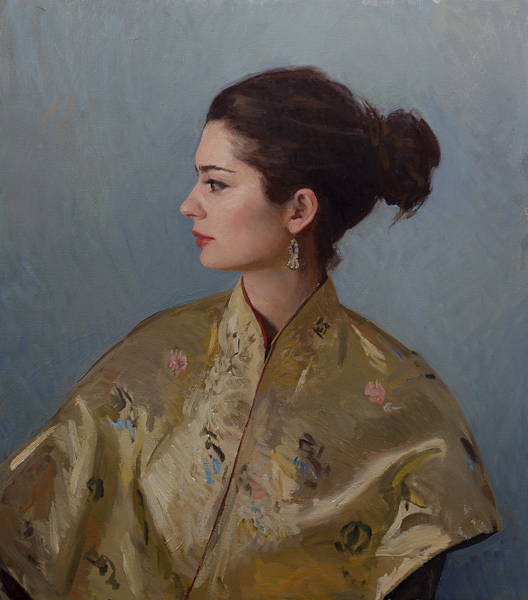I dislike working from photographs. I was trained over many years working exclusively from life and my work from photos is often weak. I find there is too little information in a photograph compared to life, and I can’t trust a photo for values, shapes or colors. While I have pulled out a decent painting or two from photos, it was mostly a case of luck.
Occasionally for commissioned portraits the clients wont give me enough sittings and I’m forced to use a photograph. A problem specific to painting portraits from photographs is that you only get one expression from the sitter. The beauty of working from life, for me, is that you can change the subject’s expression as you work. A portrait painted from life ends up as a composite of many aspects of the sitter’s personality. One painted eye can say one thing about their personality, the other eye can say something else.
An idea I’ve had over the years as a means of resolving this problem is to paint from a looped video of the sitter, rather than a static photograph. That way I would be able to study the changes in expression and pick the best moments to use for the features of the sitter, thus creating a more complete portrait of the subject’s personality.
An advantage of a looped video over even a live model is that portrait models often get bored while sitting. I find it difficult to keep them entertained with conversation and concentrated on the portrait at the same time. Below is a short looped gif of my wife posing for a portrait I’ve been working on, showing the moment she lights up and laughs. By playing the loop on a television next to the canvas I could, in theory, choose various frames to study for a more animated expression.
Tina sat the whole time for this particular portrait. I did play around with the shapes and studied the muscle movements from a looped video on the tv (since neither of us watches tv, I’ve moved it to the studio to experiment with). Below is the result.

Tina in a Kimono. 70 x 60 cm, oil on linen
The best DSLRs on the market for video at the moment are the GH series from Panasonic. I have two old GH1s I got for next to nothing when the GH2s came out. Both the GH1 and GH2 can be hacked to greatly improve the amount of information that the camera records. This, for anyone attempting to paint from video, is a big advantage.
I think video could be a good addition to the arsenal of any professional portrait painter who works from photographs.











